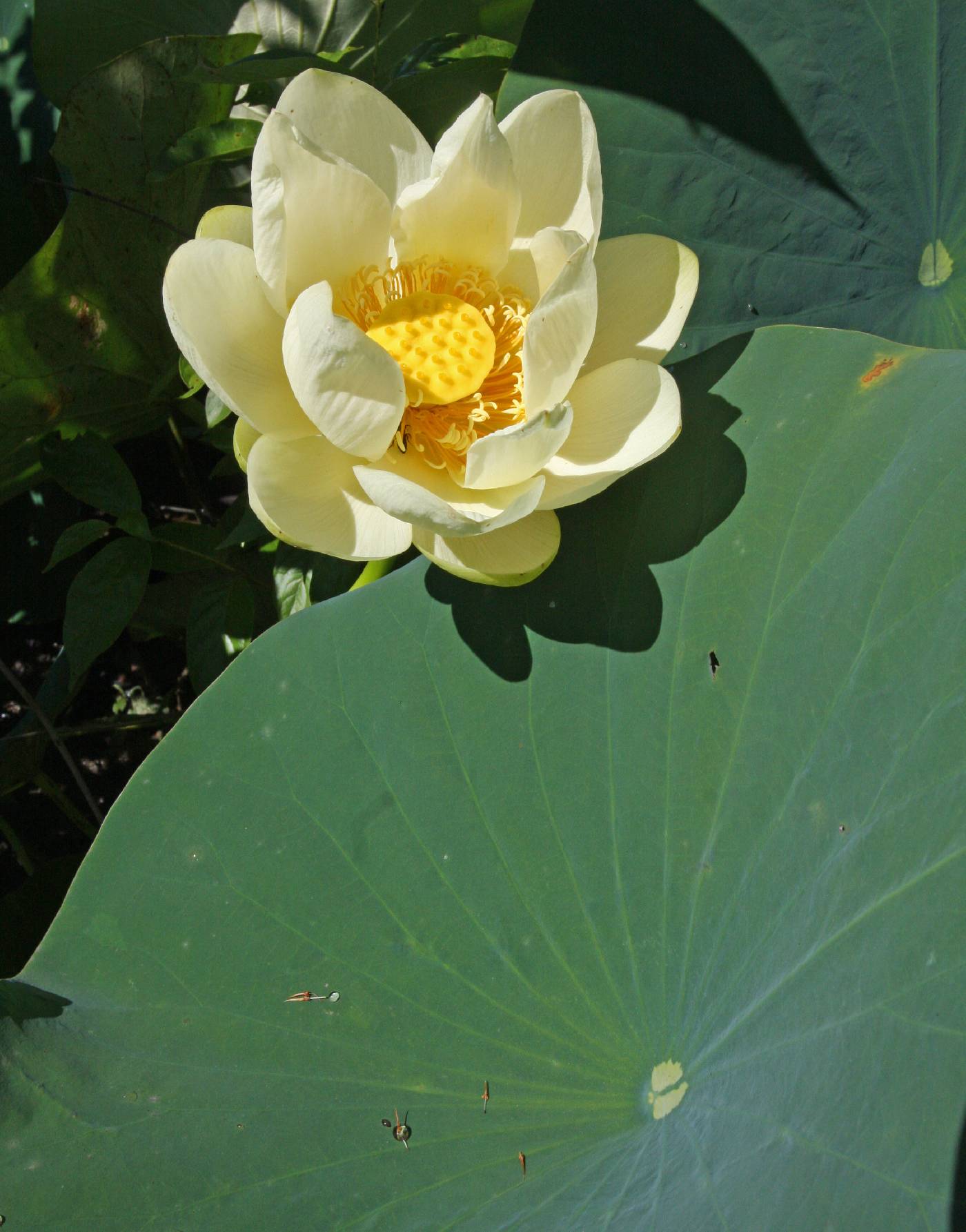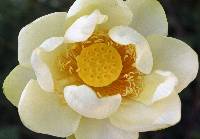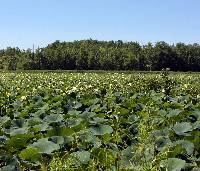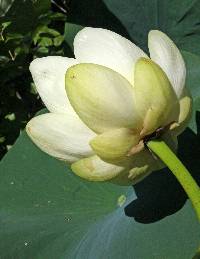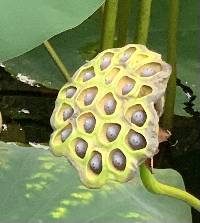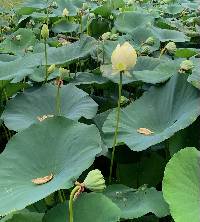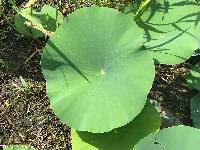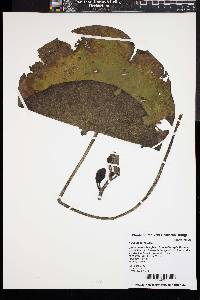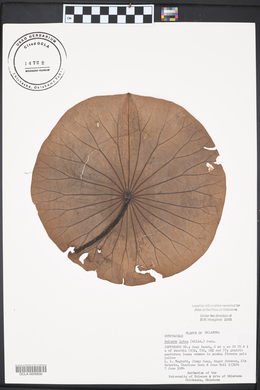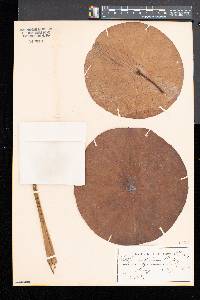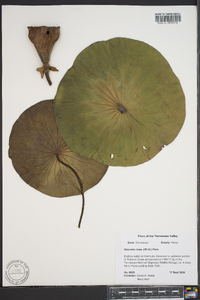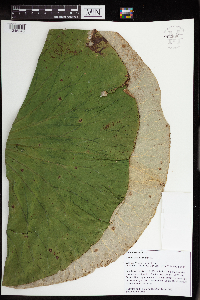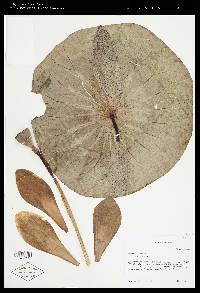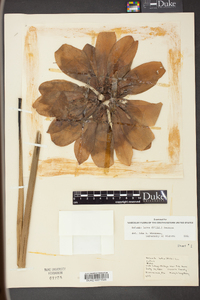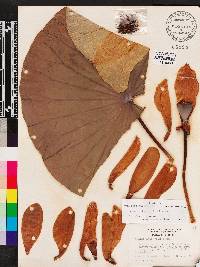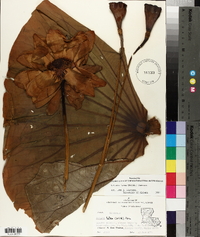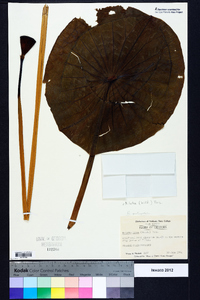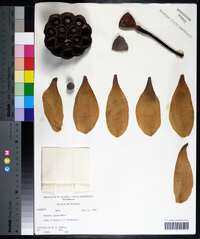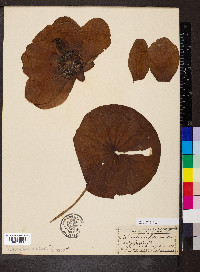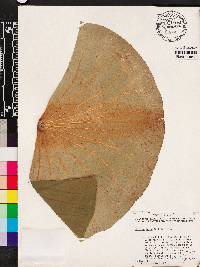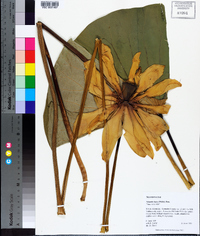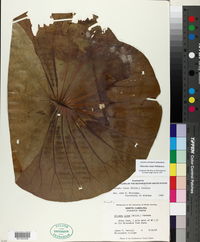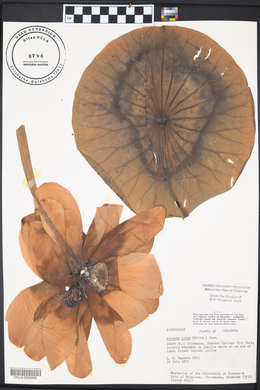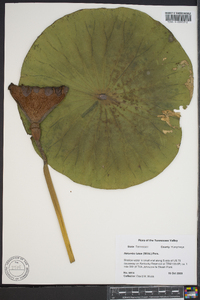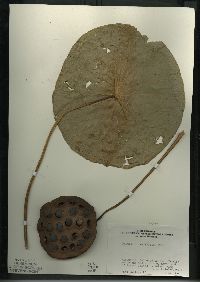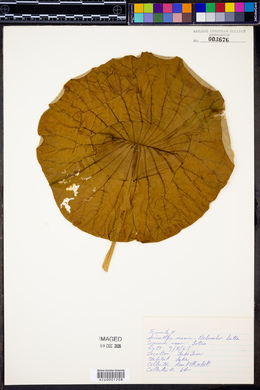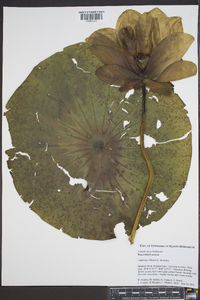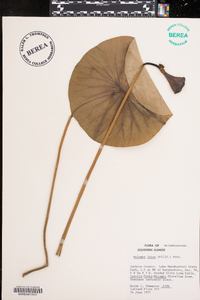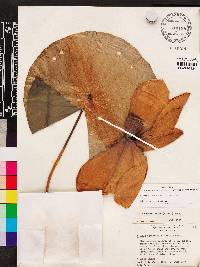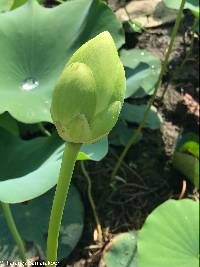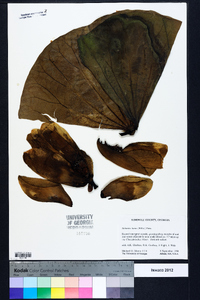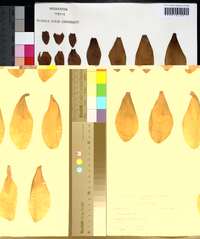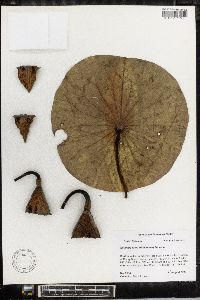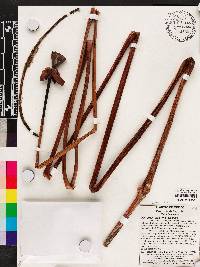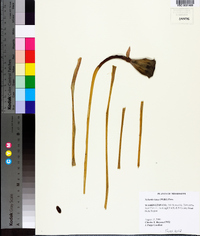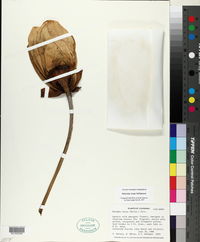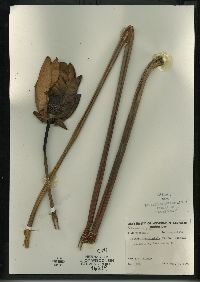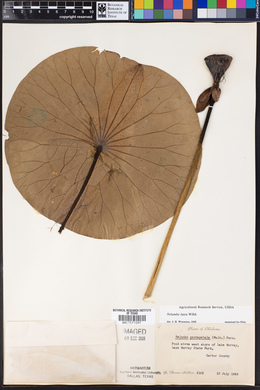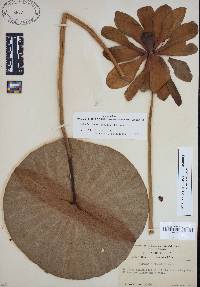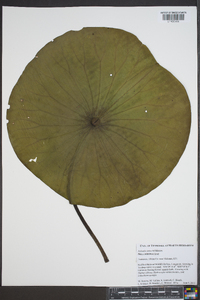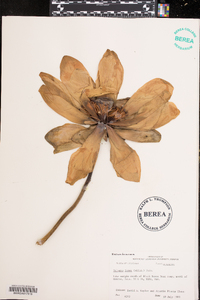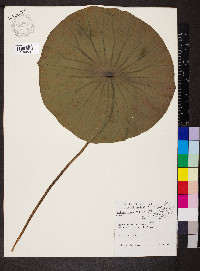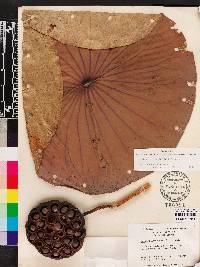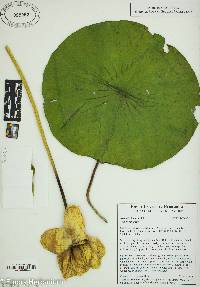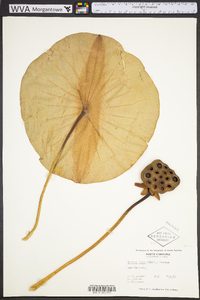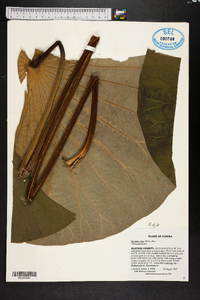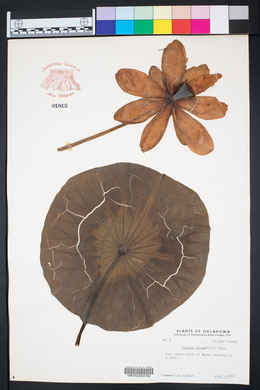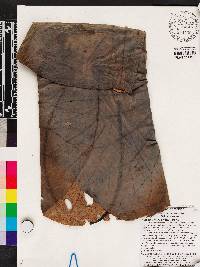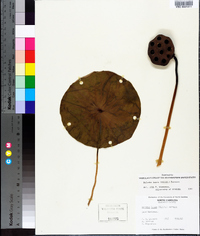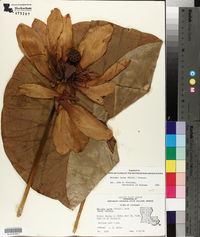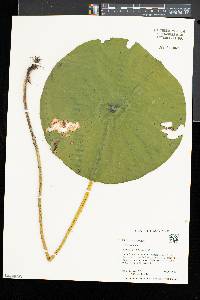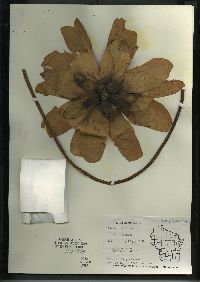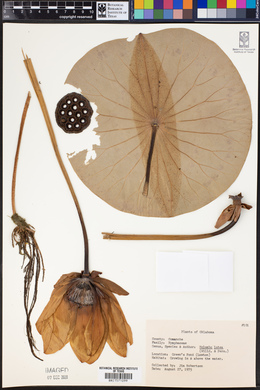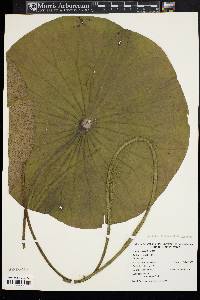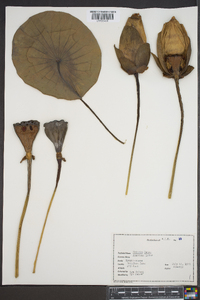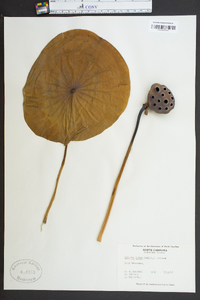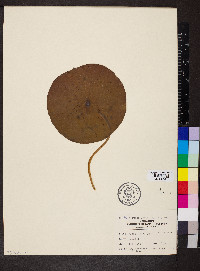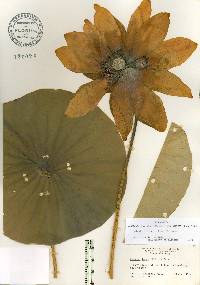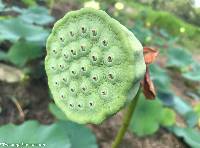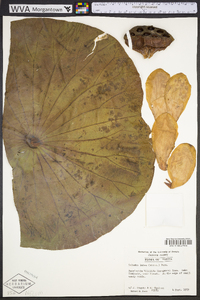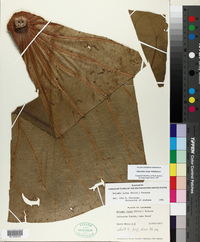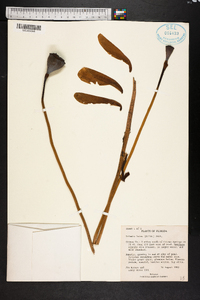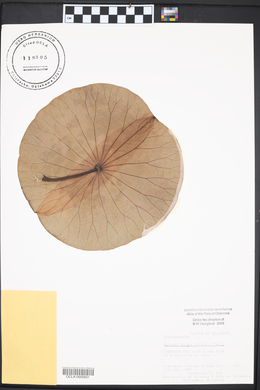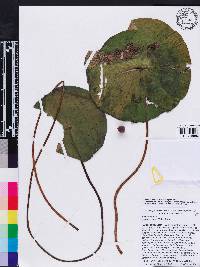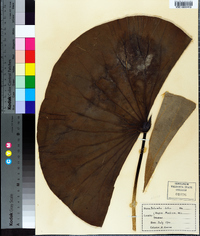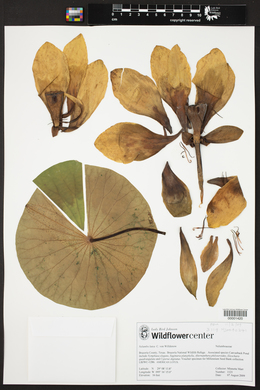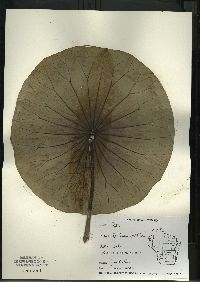Nelumbo lutea
|
|
|
|
Family: Nelumbonaceae
American Lotus
[Nelumbium pentapetalum (Walter) Willd., moreNelumbo nucifera subsp. lutea (Willd.) Borsch & Barthlott, Nelumbo pentapetala , Nymphaea pentapetalum Walter] |
Leaves: petiole to 2 m or more. Leaf blade to 6 dm or more. Flowers: tepals pale yellow, 1-13 cm, outermost 1-5 normally persistent; anthers 1-2 cm. Fruits somewhat globose, 10-16 × 8-13 mm, mostly less than 1.25 times longer than wide; receptacle to 1 dm diam. at maturity, abruptly narrowed ca. 1-2 cm below flattened top, base tapered, lateral surface usually distinctly striate. 2 n = 16. Flowering late spring-summer. Mostly flood plains of major rivers in ponds, lakes, pools in marshes and swamps, and backwaters of reservoirs; 0-400 m; introduced at other sites; Ont.; Ala., Ark., Conn., Del., D.C., Fla., Ga., Ill., Ind., Iowa, Kans., Ky., La., Maine, Md., Mass., Mich., Minn., Miss., Mo., Nebr., N.J., N.Y., N.C., Ohio, Okla., Pa., R.I., S.C., Tenn., Tex., Va., W.Va., Wis.; Mexico; West Indies (Cuba, Jamaica, and Hispaniola); Central America (Honduras). Nelumbo lutea is a species as magnificent as its Asian relative, N . nucifera , but it is less cultivated for ornament. It was probably originally confined to flood plains of major rivers and their tributaries in the east-central United States and carried northward and eastward by aborigines who used the seeds and tubers for food. The species is sometimes an aggressive, difficult-to-eradicate weed in ponds, lakes, and reservoirs. Although Nelumbo lutea is often attributed to (Willdenow) Persoon, the spelling Nelumbium luteum used by Willdenow is an orthographic error for Nelumbo lutea (W. Greuter et al. 1994, Art. 61.4) that should be corrected, and Persoon's later combination is superfluous. The name Nelumbo pentapetala (Walter) Fernald, sometimes used for this taxon, was based on Nymphaea pentapetala Walter, a name of uncertain application that has been recently proposed for rejection (J. H. Wiersema and J. L. Reveal 1991).
Lvs 3-7 dm wide; peduncles rising to 1 m above the water, the solitary, pale yellow fl 15-25 cm wide; mature receptacle 1 dm wide, flat on top, the acorn-like frs 1 cm thick; 2n=16. In quiet water; irregularly from N.Y. and s. Ont. to Minn., s. to Fla., Tex., and W.I.; N. Engl., where probably only intr. Summer. (?N. pentapetala) Gleason, Henry A. & Cronquist, Arthur J. 1991. Manual of vascular plants of northeastern United States and adjacent Canada. lxxv + 910 pp. ©The New York Botanical Garden. All rights reserved. Used by permission. From Flora of Indiana (1940) by Charles C. Deam This plant is so conspicuous that botanical collectors would not overlook it. Before settlement in Indiana, it no doubt was local in nearly all parts of the state. Its habitat is the deeper ponds and shallow lakes or the borders of deeper ones. One writer suggests that its northern distribution is due to its introduction by the aborigines who used the seed and tubers for food. It is becoming extinct in Indiana. I know of five colonies and it is reported still to exist in the Calumet Region. Drainage and ruthless digging of it have contributed to its disappearance. I recall that it was common in the Stodgdill Pond in Owen County and in Blue River Lake in Whitley County, but it has been gathered in these places until it is now nearly extinct. The species, however, spreads rapidly if not disturbed. In 1872 Babcock reported it as infrequent in Wolf and Calumet Lakes in Lake County. James, in a "Contribution to the Flora of Cincinnati, Ohio" writes that it was "abundant in a pond back of Jeffersonville" in Clark County in 1877. Clapp, who died in 1865, reports that it was scarce about New Albany in his time. Schneck, in 1876, reports it as "common in ponds" in the Lower Wabash Valley where it has now entirely disappeared. In 1897 Blatchley reported it as scarce in ponds in Vigo County. Ridgway mentions a trip to Foote's Pond in Gibson County in 1872, when Dr. Schneck and he measured leaves of it that were 3 feet in diameter. There are records of the seed remaining dormant for at least 200 years and germinating (Plant Physiology 5: 225. 1930). The following quotation from Hooker's Jour. Bot. 1: 189. 1834 is instructive: "Dr. Short of Kentucky writes me . . . 'On the Ohio River, a hundred miles north of Lexington, my brother owns a considerable tract of land, a piece of which adjoining the river was subject to inundation, and in a shallow basin of 50 acres or more, the water remained throughout the year. Twenty years ago this basin was drained, sown in grass and is now a productive meadow, -- the upper stratum being a tough, whitish clay. In plowing this piece of ground lately, immense quantities of the seeds of the Cyamus (Nelumbo) were turned up from among the clay in which they were embedded to a considerable depth; they are perfectly sound and hard, requiring much effort to break them open, and exhibiting, within, the cotyledons and embryo, full, plump, and apparently fresh; -none of them, however, manifest the slightest disposition to vegetate. The plant has certainly not grown there for twenty years; and the oldest resident of the neighbourhood has no recollection of having ever seen it.' " …… Indiana Coefficient of Conservatism: C = 4 Wetland Indicator Status: OBL |
|
|
|

